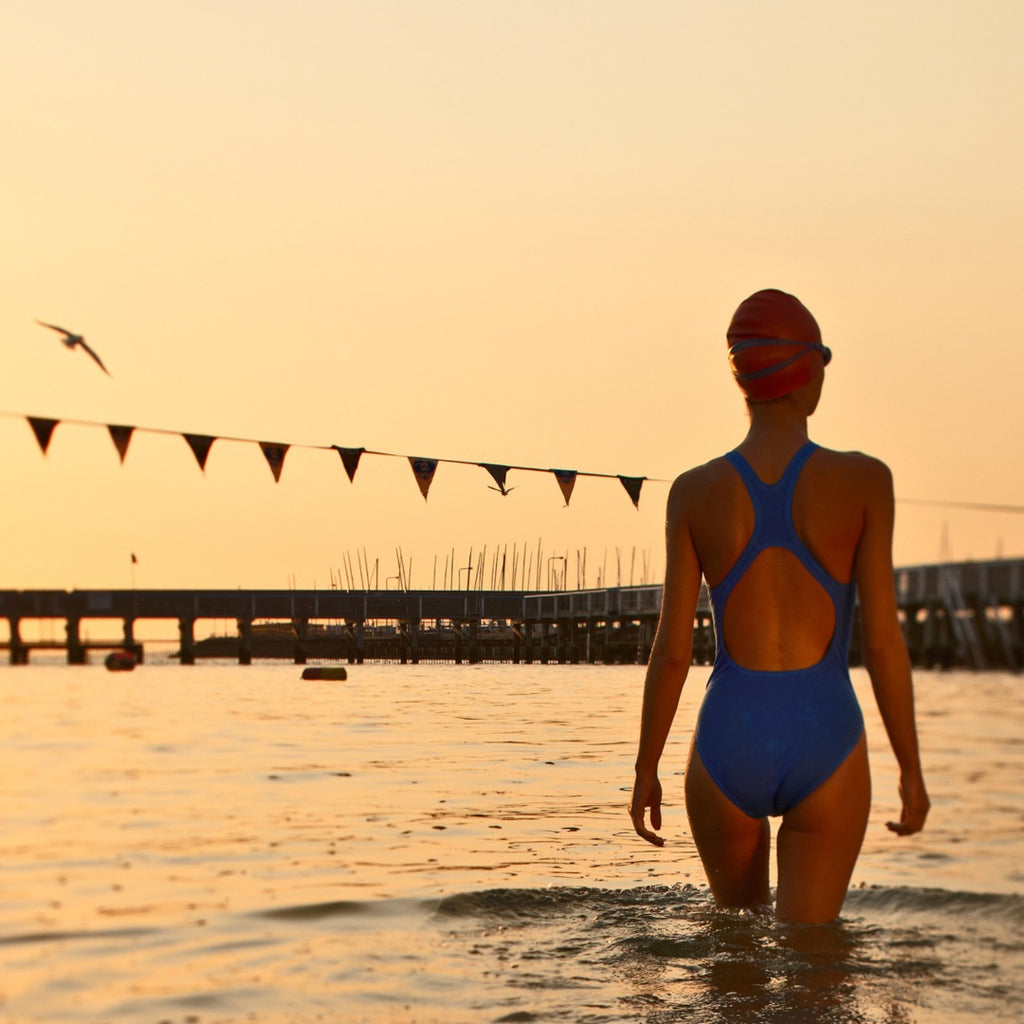
Open water swimming 🏊♀️ is definitely more thrilling and physically challenging then pool swimming. However the temperature 🥶 , murkiness and currents 🌊 can frighten the bravest of the brave. CEO and president of Reflect Sports, Laurie Mellott is no stranger to open water swimming. Starting at age 10 she is not a stranger to surreal feeling of accomplishment that open water swimming brings. Here she share her tips for beginners to get started. Following these will build your open water competence.
1. Endurance 💪🏼
You cannot brave an open water swim, until you can swim 2-3 times the distance...non-stop in the pool. Distance in open water is more challenging then the equivalent distance in the pool. Building your stamina is the first and most important step.
2. Alternate Breathing 🏊♀️
Open water conditions may prevent you from breathing on your favorite side. Practice alternate breathing and get comfortable breathing every 3-4 strokes.
3. Turn Without the Wall 🚫
While doing a 500, tumble turn at the flags; without the aid of pushing off the wall. Build to a 800, then a 1000.
4. Practice Sighting 👀
Use short, quick head lifts after taking your side breath to sight a landmark. You can exhale or hold your breath, kick extra hard to maintain buoyancy. If you lift your head too much your upper body sinks, creating drag and slowing you down.
5. RELAX! 🧘♀️ 🧘♀️🧘♀️
Second most import to endurance...you have to relax. Cold water open water 💦 swims in the Pacific and Great Lakes can rattle you both mentally and physically. To be successful, breathe steadily - you can take cold showers or submerge yourself in cold baths while steadily breathing.
Do you have questions or a fun story to share about open water swimming? We would love to hear it!
1. Endurance 💪🏼
You cannot brave an open water swim, until you can swim 2-3 times the distance...non-stop in the pool. Distance in open water is more challenging then the equivalent distance in the pool. Building your stamina is the first and most important step.
2. Alternate Breathing 🏊♀️
Open water conditions may prevent you from breathing on your favorite side. Practice alternate breathing and get comfortable breathing every 3-4 strokes.
3. Turn Without the Wall 🚫
While doing a 500, tumble turn at the flags; without the aid of pushing off the wall. Build to a 800, then a 1000.
4. Practice Sighting 👀
Use short, quick head lifts after taking your side breath to sight a landmark. You can exhale or hold your breath, kick extra hard to maintain buoyancy. If you lift your head too much your upper body sinks, creating drag and slowing you down.
5. RELAX! 🧘♀️ 🧘♀️🧘♀️
Second most import to endurance...you have to relax. Cold water open water 💦 swims in the Pacific and Great Lakes can rattle you both mentally and physically. To be successful, breathe steadily - you can take cold showers or submerge yourself in cold baths while steadily breathing.
Do you have questions or a fun story to share about open water swimming? We would love to hear it!
